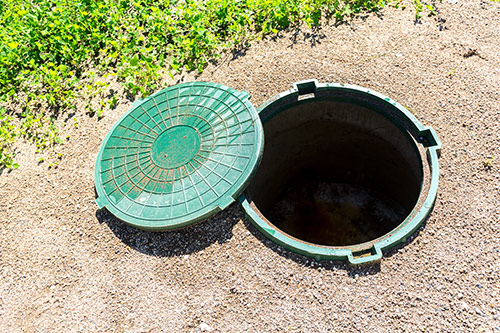
The cost to replace a septic tank and drain field can have a broad price range due to several key factors. While the national average is around $6,000, differences in local labor rates, system size and type, and material choices can influence regional averages.
Septic Tank and Drain Field Size and Type
Size and type are two of the most important factors to keep in mind when homeowners are budgeting for the cost to replace a septic tank and drain field. To start, larger septic tanks and drain fields typically cost more to replace due to the increased labor, time, and materials needed. Additionally, larger septic tanks tend to be heavier and more difficult to install than small septic tanks, causing most contractors to charge extra for the additional installation challenges. Finally, there are several different types of tank systems and drain fields to choose from, all of which come with unique advantages and price points.
Labor and Permits
Replacing a septic tank and drain field requires significant physical work, including excavating, placing the tank, and laying out the drain field. The labor cost to replace a septic tank and drain field accounts for approximately 60 percent of the entire price.
Local permits are necessary for septic system work to ensure legal compliance and safe handling of wastewater. But costs for permits widely vary, depending on local regulations. Homeowners may need to budget as much as $2,000 for a septic system permit, though the fee can be as little as $400. It is not advised to start any sewer system work without the proper permits in place.
Site Accessibility
Not all septic system sites are equally accessible, and this element will affect the total cost. Steep terrain, narrow entry points, and remote areas are examples of locations that are more difficult to access. Challenging locations such as these require additional time, labor, and potentially special equipment to get the job done.
Site Inspection
Septic systems typically require at least two professional inspections during construction no matter if they’re new systems or replacements. Certified professionals conduct these inspections to ensure the system meets safety standards and local regulations.
Inspections will verify installation steps, system functionality, and environmental safety. They can identify potential issues before the system is complete and prevent costly repairs or failures down the road.
Percolation Testing
Percolation testing assesses the soil’s ability to absorb and filter water. This test is typically required before installation or replacement of a septic system leach field, especially if an existing field has been used for several years.
Before installing a septic system and drain field, it is critical to conduct a percolation test to determine the soil absorption rate, which affects the design of the system. Site topography, drainage, and proximity to water sources should also be evaluated to ensure compliance with environmental and sanitary standards. Finally, clearing the site of obstructions and obtaining the necessary permits are important steps in preparation for installation.
The test result can help determine if a replacement drain field can remain in the same location and operate as needed or if it requires relocation. Percolation tests can help prevent serious issues like groundwater contamination and system failure.
Additional Costs and Considerations
In addition to budgeting for the main factors in replacement septic tank costs, homeowners are advised to consider other possible expenses as well. These may involve tree removal, engineering, or installation of new septic lines.
Contact Morse Engineering and Construction for more information.
Source: bobvila.com
